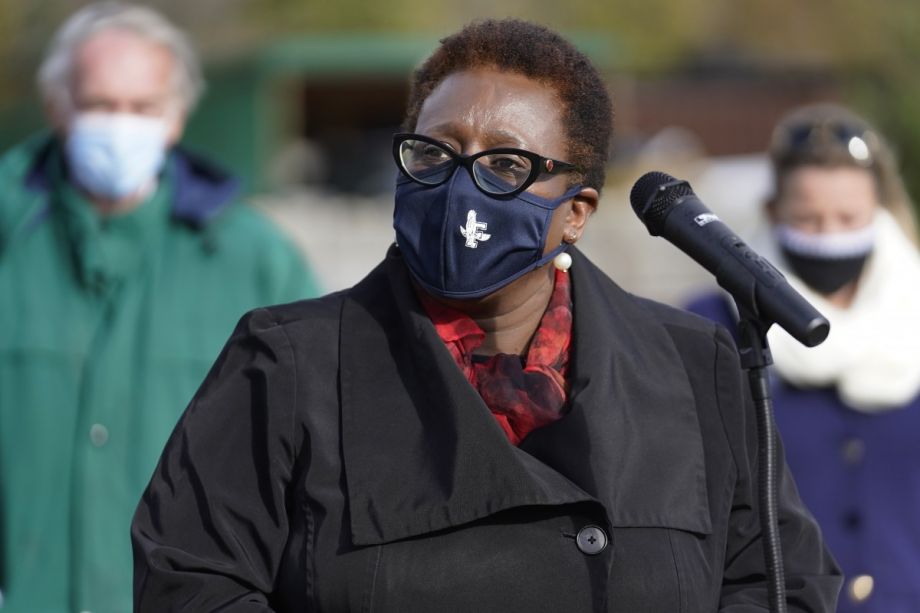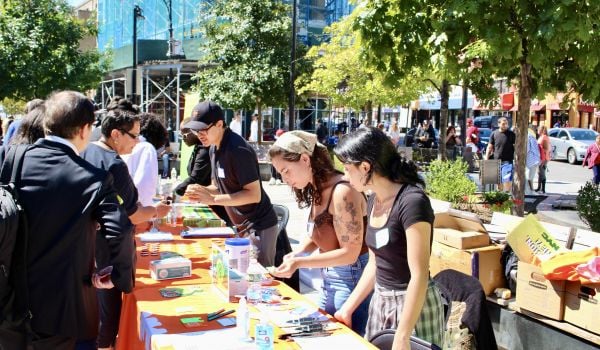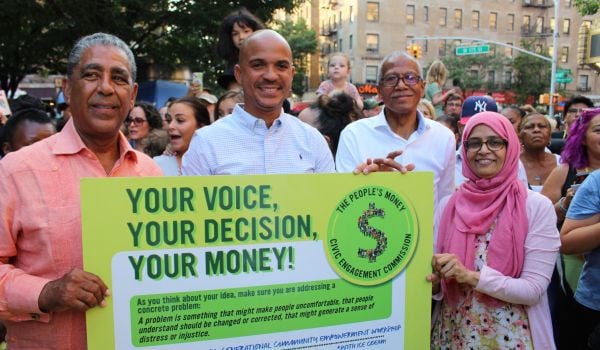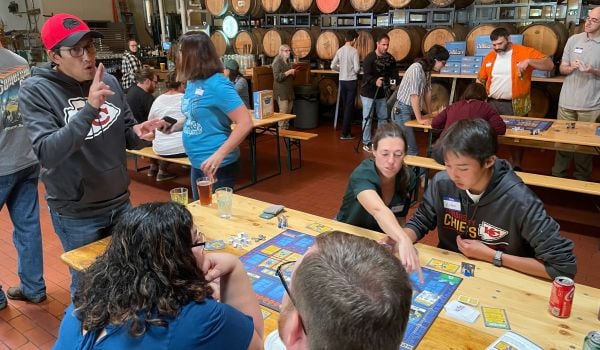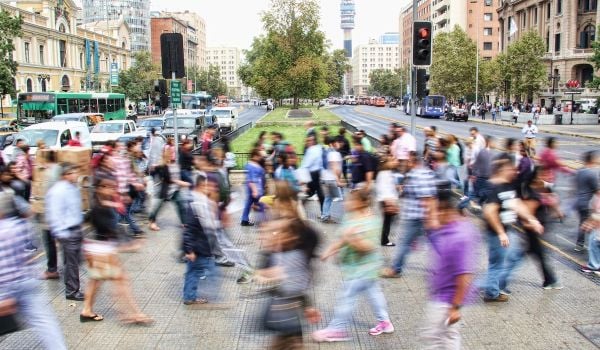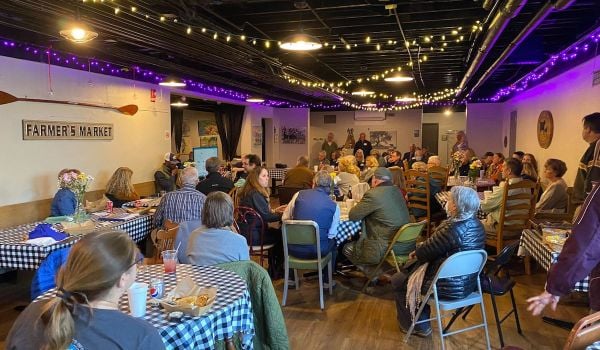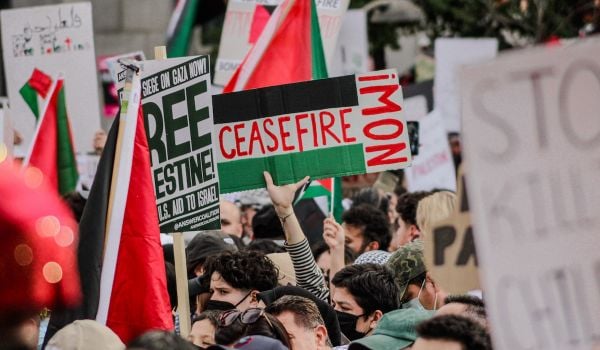Framingham, Massachusetts, a former mill and manufacturing hub 20 miles west of Boston, is ramping up fresh efforts to improve civic engagement, small business support and local transportation for its densely populated southeast corner.
The neighborhood has no shortage of challenges. Southeast Framingham residents suffer double the city’s rates of unemployment and poverty, with median household income in the neighborhood just one-third that of the city overall, according to recent figures from the mayor’s office. Many residents lack fluency in English, an obstacle in connecting residents and business owners to city services and civic participation. Nearly half of the neighborhood’s housing units are subsidized, yet a majority of households—91 percent of whom are renters—are cost-burdened, paying more than 30 percent of income toward housing.
As if those troubles weren’t enough, the COVID-19 pandemic has hit Southeast Framingham disproportionately hard. The neighborhood’s plight was underscored last summer when Gov. Charlie Baker launched free COVID-19 testing sites in eight hard-hit municipalities. Framingham was not among them, prompting the city’s dismayed public health director to point out that in assessing municipalities only as a whole, the state was missing “pockets within the city facing tremendous barriers.” COVID rates in Framingham have been far higher among Hispanic and Black residents, residents of multi-family housing, and those speaking primarily Spanish and Portuguese at home—all factors concentrated in Southeast Framingham.
 Last fall, Mayor Yvonne M. Spicer and her staff were able to direct heightened attention to the neighborhood, spurred by participation in the inaugural Just City Mayoral Fellowship sponsored by the Mayors’ Institute on City Design (MICD) and the Just City Lab at Harvard Graduate School of Design. The program was designed with 2020’s double-whammy of pandemic and racial justice reckoning in mind. Seven participating U.S. mayors from small to mid-sized cities (Framingham’s population is about 75,000) were challenged to choose a neighborhood experiencing inequity and historic disinvestment and create a “manifesto of action” to tackle the problems with a racial justice lens.
Last fall, Mayor Yvonne M. Spicer and her staff were able to direct heightened attention to the neighborhood, spurred by participation in the inaugural Just City Mayoral Fellowship sponsored by the Mayors’ Institute on City Design (MICD) and the Just City Lab at Harvard Graduate School of Design. The program was designed with 2020’s double-whammy of pandemic and racial justice reckoning in mind. Seven participating U.S. mayors from small to mid-sized cities (Framingham’s population is about 75,000) were challenged to choose a neighborhood experiencing inequity and historic disinvestment and create a “manifesto of action” to tackle the problems with a racial justice lens.
Over 11 weeks, the fellowship cohort gathered virtually to hear presentations on such topics as how public policies historically have contributed to spatial and social injustice, and how design and planning strategies can help right historic wrongs.
For Spicer, who took office in 2018, the obvious choice was Southeast Framingham, which she called “the most underserved part” of her city.
The first African American woman popularly elected to a mayor’s office in Massachusetts, Spicer is no stranger to racial justice ideals. As mayor, she has declared racism a public health emergency and secured approval to hire the city’s first diversity, equity and inclusion officer.
Still, it’s not always easy to direct attention toward less visible residents.
“The big outcome of this fellowship is the targeted focus,” she says. “This has allowed me to put a laser-beam focus on this section of the community. And not just me, but my staff.”
Spicer and her staff pinpointed engagement, resilience and fairness as key values. In terms of planning, they zeroed in first on shoring up small business support, an urgent immediate need in the face of the pandemic’s economic fallout.
“We took a look at the programs for small business owners: How do they participate? How can they?” Spicer says. “And so that’s the other part – creating those mechanisms for greater engagement.”
They began a concentrated push to expand business support and civic engagement, especially among youth and among those who’ve not typically had visibility at community meetings or on local boards and commissions.
Spicer had already implemented a Community Conversations series and weekly Community Hours (which during the pandemic are continuing as Zoom sessions) to keep city residents informed and involved. A multi-week “Framingham Government Academy” to educate residents about local government and how they can participate shifted in fall to a virtual format. But the team now sees they could do more to make city affairs inclusive of those who need language interpretation, need extra recruitment to participate, or lack internet access.
For each step forward, though, new challenges become plain to see. Lessons learned so far include the need for cultural relevance, multi-language interpretation and stronger recruitment efforts, Spicer says. Another obstacle is the digital divide.
“The virtual Government Academy has drawn more participation—we had twice the number of people,” Spicer says. “But here’s the kicker: It’s not necessarily the people we were hoping would come, because they have challenges with internet access. We are working to provide Wi-Fi hotspots, particularly in underserved neighborhoods like this one.”
Alaa Abusalah, Spicer’s citizen participation officer, had begun significant outreach in Southeast Framingham before the pandemic. She estimates she attended 100 events, from community meetings to cookouts hosted by churches and public housing developments, meeting residents and answering questions about city government. The presentations and interactions with other cities last fall crystallized some crucial truths.
“I personally began understanding the importance of intentionality,” Abusalah says. “In order for us to reach residents who historically have not participated, there are historic systems that have to be addressed.”
Abusalah is pursuing new funding avenues to support several inclusivity and assistance initiatives for Southeast Framingham. Among them: a Dollarwise Innovation Grant from the U.S. Mayors Conference to build a youth entrepreneurship program; NLC Local Democracy funding to help build on 2020 census outreach infrastructure; and funding from Massachusetts’ Urban Agenda program to create a constellation of services including an “opportunity hub” to coordinate job training and social services, a partnership with MassHire to provide neighborhood youth employment training and opportunities to engage with local government, and a one-stop business resource center. The resource center will support immigrant businesses by offering city permits and licenses in translation and serving as a clearinghouse for resources on ESL classes, continuing education and workforce certifications.
“We were hearing how other towns are experiencing things in different ways. There are different approaches than what we know,” says Abusalah. “That was super helpful—all of these ideas for grants came from these conversations.”
The city is taking some other courageous steps on the road to inclusivity—including opening itself up to a hard look at how things actually work now. One eye-opener was discovered through a partnership with Boston University’s MetroBridge Program. Last fall, BU students analyzed equity in public participation in Framingham’s forums on schools and housing development. Their examination revealed that the makeup of committees, public meeting attendees and petition-signers skews whiter, older and more affluent than Framingham’s population as a whole (a pattern that holds true across most cities). They observed that parents of “high-need” students, many of whom are racial minorities and/or non-native English speakers, did not speak up in meetings they attended.
The student teams’ recommendations, presented in mid-December, included providing more translators at meetings; holding a facilitated dialogue between city officials, school leaders and immigrant populations; presenting to the City Council data on the mismatch between petition-signer demographics and the general population; and convening parents of high-need students with real intent to include them in decision-making around resuming in-person classes. Spicer’s team now is assessing how to implement these actions while expecting additional BU teams, skilled in Spanish and Portuguese, who can connect more with immigrant populations and possibly help translate information.
While still a work in progress, there are signs the increased outreach is paying off. Abusalah noted that for the city’s newly formed Sustainability Committee—devised with input from community hour sessions—they received an unheard-of 36 applications for nine open seats, one of which is reserved for a youth age 16 to 25.
It can be cumbersome work to improve city processes, right down to the labor of creating spreadsheets to track previously untracked demographic data.
“We are literally changing systems. That takes time,” Abusalah says.
Spicer’s team also is anticipating a round of follow-up technical assistance from MICD aimed at providing guidance on transportation improvements. While Southeast Framingham’s assets include proximity to two MBTA commuter rail stations, local transportation access and safety is spotty, with pedestrian-unfriendly streetscapes and infrequent bus service insufficient for shoppers and workers with night and weekend shifts. Improvements will focus also on creating easier access to parks and downtown businesses.
All of this forward thinking has to be juggled, always, with the relentless duties of a mayor’s office, from mobilizing snowplows to monitoring COVID rates.
“I have been so focused on this pandemic, and getting resources to people who need them,” Spicer says. “I’m trying to come up for air. My goal is to get out of crisis mode and be able to do these other things. I’ve got a lot of balls in the air and I’m keeping them moving as best I can.”
This article is a part of “Design Leaders,” a series highlighting mayors’ roles in design and the built environment in their cities. Design Leaders is made possible with the support of The Mayors’ Institute on City Design, a National Endowment for the Arts leadership initiative in partnership with the United States Conference of Mayors.
Sandra Larson is a Boston-based freelance writer covering urban issues and policy. Her work has also appeared in The New York Times, Guardian Cities and the Bay State Banner. See her work at sandralarsononline.com.
Follow Sandra .(JavaScript must be enabled to view this email address)

